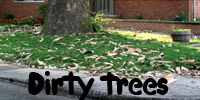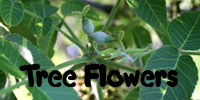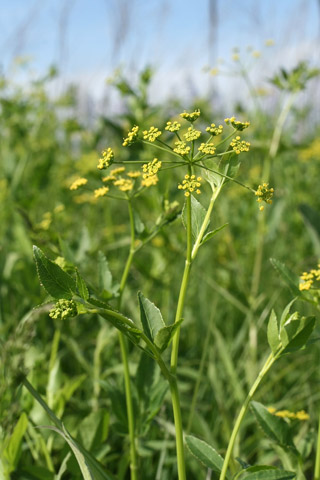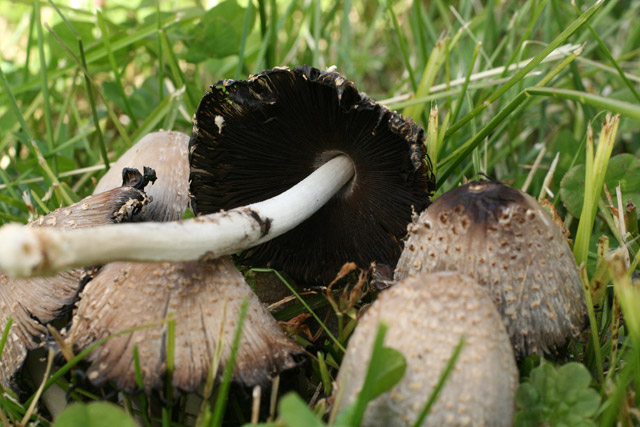


|
Welcome to bobklips.com, the website of Bob Klips, a plant enthusiast living in Columbus, Ohio.
May 29 and 30, 2008. Claridon Railroad Prairie:
A Tale of Two Umbellifers
Meadow parsnip, Thaspium trifoliatum, is a challenging species
to identify. It's remarkably similar to another, more common, prairie
plant that also is a medium-sized, yellow-flowered, spring-flowering
member of the carrot family (Apiaceae), the lovely golden Alexanders, Zizia aurea.
The Apiaceae is a very distinctive plant family. It is named after the genus Apium, which includes celery, A. graveolens. The
Apiaceae used to be called the "Umbelliferae," meaning
umbel-bearing," because
the flowers are usually borne in distinctive radiating clusters
called umbels within which
the flowers are individually stalked and attached all at the same
point on the flowering stem. Queen-Anne's lace and poison hemlock are
familiar wild examples, while dillweed, carrot and parsely are in the
garden. Other distinguishing traits are compound leaves with a
base that sheathes the stem, and tiny flowers that have an
inferior ovary that develops into a unique fruit type called a
"schizocarp" that separates into two individual one-seeded units. Some
familiar spices --dill "seed," and caraway "seed" --are from this
family. (Being a portion of fruit containing a seed, these spices
technically are not seeds, although in nature they function as such.)
[Nowadays, all plant families name start with the prominent genus in that family and end in "-aceae" (pronounded "ai-seh-ee"). Older books, however, designated a few families by names that
don't have -aceae endings. There were a total of 8 of them, mostly
very large families with some singular distinctive trait. People (old
people anyhow) still refer to "crucifers" in reference to the
traditional name of the mustard family, Cruciferae (nowadays called
Brassicaceae), and "composites" for the aster family (Asteraceae).]
Claridon Railroad Prairie is a diverse prairie remnant of the Sandusky
Plains. The prairie is one mile long and 50 feet wide, situated between
an active CSX railroad track and a little-used county Road in Marion
County, OH. It was the inspiration and primary seed source for
the Larry R. Yoder Prairie, a prairie restoration at OSU's Marion
Campus. Both similar umbelliferous species occur at
Claridon, and they are flowering now.

Claridon Railroad Prairie, Marion County, OH, May 29, 2008.
 
Two simlar umbellifers. Left: golden Alexanders (Zizia aurea). Right: meadow parsnip (Thaspium trifoliatum). Claridon Railroad Prairie, Marion County, OH, May 29, 2008.
 
Leaves of two simlar umbellifers. Left: golden Alexanders (Zizia aurea). Right: meadow parsnip (Thaspium trifoliatum). Claridon Railroad Prairie, Marion County, OH, May 29, 2008.
In a standard botanical reference manual, the genera Zizia and Thaspium end up alongside one another, separated only by details of the inflorescense and the ovary. (Note that the Zizia
leaf specimen above has five leaflets although it's "supposed" to have
only three. Evidently the plant didn't read the book.)
Both diagnostic traits can be
discerned when the plants are either flowering or fruiting,
although the ovary-is-winged feature, subtle in flower, is very conspicuous
in fruit. The central flower, and only the central
flower, of Zizia is sessile (stalkless), while all the flowers of Thaspium
are stalked. Note also the prominently winged ovary (lower portion of epigynous flowers such as these) is winged in the Thaspium.
 
Partly dissected umbellets of two similar yellow-flowered prairie umbellifers. Zizia is on the left and Thaspium
is on the right. A few flowers were cut off from the foreground region of each cluster to
reveal the central flowers. Claridon Prairie, May 30, 2008.

Sisyrinchium albidum (family Iridaceae), Claridon Railroad Prairie, Marion County, OH, May 30, 2008.
The fleabanes (genus Erigeron in the family Asteraceae) are native annuals, biennials or short-lived perennials. They resemble asters (Symphyotrichum)
but are generally spring-flowering whereas the asters bloom in late
summer and fall. I'm not sure of the species, but I think that the one
with clasping leaves, which this seems to have, is the Philadelphia
fleabane (E. philadelphicus).
 Erigeron philadelphicus (?) at Claridon, May 29, 2008.
Erigeron philadelphicus (?) at Claridon, May 29, 2008.
 Stem and leaves of Erigeron philadelphicus (?) at Claridon, May 29, 2008
Stem and leaves of Erigeron philadelphicus (?) at Claridon, May 29, 2008
May 23, 2008, Larry R. Yoder Prairie
at the OSU-Marion Campus
While
the bio students caught insects for the "animal diversity" lab, the
instructor re-visited a spot where bastard-toadflax recently
appeared in great profusion. Now more of the plants are flowering.

Bastard-toadflax (Commandra umbellata), May 23, 2008, OSU-Marion.
Golden ragwort (Senecio aureus, family Asteraceae) is a native perennial herb of prairies and open woods.
 Golden ragwort, Senecio aureus at OSU-Marion, May 23, 2008.
Golden ragwort, Senecio aureus at OSU-Marion, May 23, 2008.

Golden ragwort, Senecio aureus at OSU-Marion, May 23, 2008.
May 23, 2008
Greenlawn Cemetery
Greenlawn Cemetery in
Columbus, Ohio is a beautiful and historic cemetery that is well known
as a great place for birding and seeing a variety of trees. I was there
this morning with my Human Biology class, doing a lab activity called
"Cemetery Demography" that constructs life tables based on birth
and death dates for people born in the 1830's versus those born in the
1880's. While the students were recording data, I snapped some pics of
plants. The tulip-trees (Liriodendron tulipifera, family Magnoliaceae) are in full flower.
Liriodendron tulipifera, Greenlawn Cemetery, May 23, 2008
The flowers of Liriodendron are much like those of Magnolia,
and are generally regarded, along with buttercups (family
Ranunculaceae) and water-lilies (Nymphaceae), to be among the most
primitive flowers. This can be conceptualized by recognizing that
flowers are basically modified branches and that flower parts --sepals,
petals, stamens, and pistils --are modified leaves on those branches.
The flowers that most resemble a branch with leaves are regarded as
most primitive. The made-up word "FENSH" is a guide to the features of
primitive flowers.
- "F" signifies "FREE," as the flower parts are separate (free) from one another, i.e., they are not fused.
- "E" stands for "EQUAL," as the flower parts within a
series are the same size and shape. i.e., the flowers are radially
symmetric.
- "N" means the flower parts (not the flowers themselves) are NUMEROUS.
- "S" is for "SPIRAL," as the numerous flower parts are spirally arranged.
- "H" represents the HYPOGYNOUS nature of the first
flowers, wherein the petals, sepals, and stamens rise away from the
flower below the pistils. (This is also called having a "superior
ovary.")
Notice in the tulip-tree blossom. how the flower parts are
separate, all the petals are the same size, the stamens are numerous
and spirally arranged, and the pistils (which are also numerous and
spirally aranged) are the topmost features. A FENSH flower,
primitive.
 Tulip-tree flower, Greenlawn Cemetery, May 23, 2008.
Tulip-tree flower, Greenlawn Cemetery, May 23, 2008.
Covering a large stump sawed off level
with the ground and also scattered in the lawn nearby is an "inky cap" mushroom, in the genus Coprinus, maybe C. atramentareus. The inky caps have closely spaced narrow black gills that decompose into black liquid as (or perhaps after) they mature.
 Inky-caps (genus Coprinus) at Greenlawn Cemetery, May 23, 2008.
Inky-caps (genus Coprinus) at Greenlawn Cemetery, May 23, 2008.
 Inky-cap (genus Coprinus) have closely spaced narrow gills. Greenlawn Cemetery, May 23, 2008, Columbus, OH.
Inky-cap (genus Coprinus) have closely spaced narrow gills. Greenlawn Cemetery, May 23, 2008, Columbus, OH.
Before they go "inky," the inky caps are
edible, but some, such as this one, have an unususal side-effect. When
consumed with alcohol, the result is intense nausea. This is caused by a
chemical in the mushrooms related to the pharmacutical medicine "antabuse," used to treat alcohol dependency.

Inky-cap (genus Coprinus) gills at Greenlawn Cemetery, Columbus, OH.
Douglas-fir (Pseudotsuga menziesii)
is a magnificant forest tree of the Pacific northwest that rivals
redwoods in height but is much more abundant. The familiar smell of
plywood is the smell of Doug-fir.
This is a member of the Pine family (Pinaceae) that can be a little
hard to identify as its single (not clustered as in pines and larch)
needles make it resemble a true fir (genus Abies) or a spruce (genus Picea).
There are subtle differences in the leaes and twigs, but when they have
cones, identification is super-easy. Douglas-fir cones have their
papery bracts that are located above each woody cone scale extending
far out from the
scale. (In almost all other pine family members the bracts are shorter
than the scales, hence they are not visible unless the cones are
dissected.)

Douglas-fir with old seed cones, May 23, 2008, Greenlawn Cemetery, Columbus OH.

Douglas-fir young seed cones, May 23, 2008, Greenlawn Cemetery, Columbus, OH.
In Columbus (and elsewhere no doubt) a few
small native woodland wildflowers have established themselves as lawn
weeds. Spring-beauty, (Claytonia virginiana, family Primulaceae)
is a good example. Several species of violets too grace lawns in some
places. Here at Greenlawn, the striped creamy violet, Viola striata (family Violaceae) is especially abundant.

Viola striata patch in green lawn at Greenlawn Cemetery, May 23, 2008.

Viola striata, Greenlawn Cemetery, Columbus, OH May 23, 2008.
Newer observations ("next")
Older observations ("next")
|

